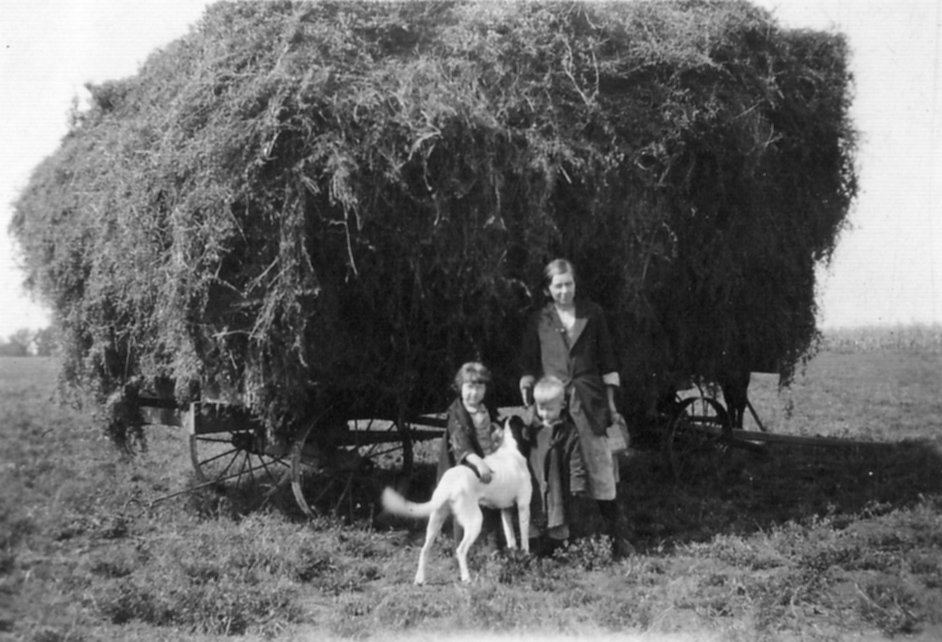 The year was 1930 and my Grandmother was 5 years old. For historical preservation, the dog, Spot, was lovingly noted on the back of the photograph. A while back, I wrote about round bales versus smaller square bales. Today, the picture depicts a time before either of those existed and hay was moved in loose piles.
The year was 1930 and my Grandmother was 5 years old. For historical preservation, the dog, Spot, was lovingly noted on the back of the photograph. A while back, I wrote about round bales versus smaller square bales. Today, the picture depicts a time before either of those existed and hay was moved in loose piles.
This photograph is my grandmother, her mother, and her younger brother, posed in front of a hay wagon, onto which the hay was loaded with pitchforks. The wagon was then taken to the barn where it was parked under the hay fork. The hay fork was a large hook, tied to a heavy rope, looped through a pulley at the end of the barn.
A team of horses was hitched to the end of the rope, and they would pull on the rope to raise the forkful of hay into the barn. Grandpa said on their farm, he was always in charge of the trip rope, which emptied the hay into position in the loft. And then the process would start all over again until the hay wagon was empty.
Today we have balers, and tractors with forks, and large trailers to stack bales on to transport them to a barn, or even another farm three states away for cattle feed. And with digital photos and frames, I doubt the dogs get their notoriety these days. Thanks to Grandma for finding this picture.
I’m telling you folks, grandparents are a goldmine. Take time to do some digging.
Until our next history lesson …
